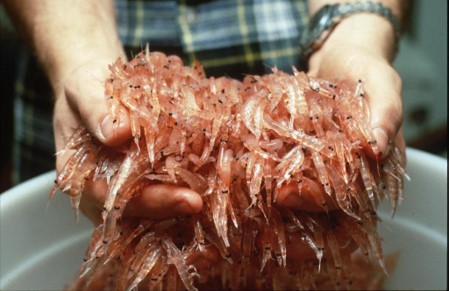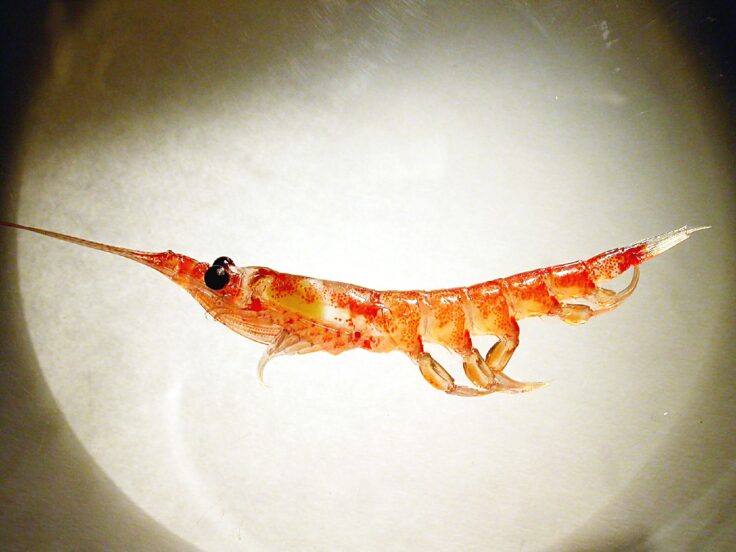Large krill swarms in the Southern Ocean could help remove additional carbon from the atmosphere, in a way that is currently ‘hidden’ in global models.
Scientists knew that the carbon-rich faecal pellets that krill produce, sink in the water column and can transfer carbon from the atmosphere to the deep ocean. In this study, a team from British Antarctic Survey found that krill moulting (shedding of the exoskeleton) could double the amount of carbon removed. The research is published today (27 November) in the journal Nature Communications.
Antarctic krill (Euphausia superba) are the main diet of whales, penguins and seals and form some of the highest concentrations of animal biomass in the world’s oceans – with over an estimated 150 million tonnes. They are also harvested for food.

This study provides the first estimate of how much carbon large swarms of Antarctic krill can draw down and store through the moulting process. The efficiency of this process has an important influence on our global climate.
Lead author Dr Clara Manno, marine ecologist at British Antarctic Survey, says:
“This is exciting news because it almost doubles the previous estimate of how much atmospheric carbon is transported into deep ocean layers by krill. Our study reveals that large krill swarms could remove a significant amount of carbon from the atmosphere. Over the entire ocean, krill transfer 0.3 million tonnes of carbon daily – equivalent to the daily domestic CO2 emissions of the UK.”
The team worked in the north Scotia Sea, located in the Southwest Atlantic Sector of the Southern Ocean, where more than 50% of all Antarctic krill are located. They collected krill moults over a year using a trap moored close to the seabed.

“Krill are really unusual crustaceans in moulting so frequently” said co-author and ecologist, Prof Geraint Tarling. “In fact, they renew their exoskeleton every 10 to 14 days, releasing their old ones to sink towards the seabed, and taking carbon with it.
“We are trying to understand the impact of environmental change on krill stocks, not only as they are a key food source for the whales, seals and penguins that inhabit the Southern Ocean, but perhaps now as they are a more important method of removing carbon from the atmosphere.”
The Southern Ocean covers 14% of the Earth’s surface and plays a fundamental role in controlling atmospheric carbon levels and global climate. This study highlights the important role that krill play in this process.
Continuous moulting by Antarctic krill drives major pulses of carbon export in the north Scotia Sea, Southern Ocean, Manno C, Fielding S, Stowasser G, Murphy EJ, Thorpe SE, Tarling GA, is published in the journal Nature Communications: https://www.nature.com/articles/s41467-020-19956-7
